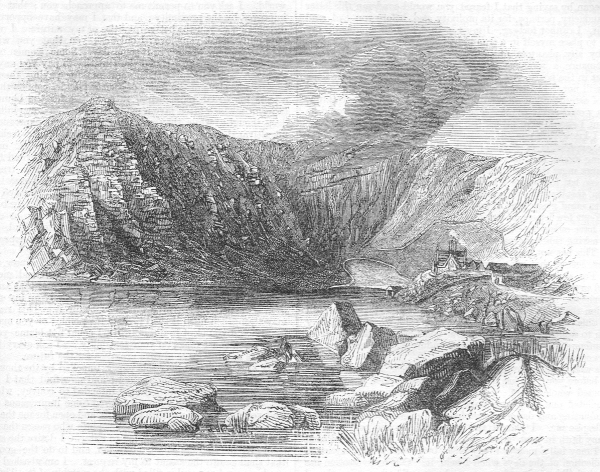Lough Bray, County Wicklow
From The Illustrated Dublin Journal, Volume 1, Number 29, March 22, 1862

IT is beyond a question, that there is no city in the British empire exhibiting around it such a variety of picturesque beauties as Dublin. We have the villa-studded, pastoral plain--the spacious bay, "with all its variety of coast, from the sandy beach to the bluff sea-promontory--the richly-wooded valley with its limped river--the lonely mountain glen with its cataracts and tiny trout-streams--the purple heath and the solitary tarn, or pool--the rural village and the gay watering-place; while in addition to all these, the interest imparted to natural scenery, by remains of ancient times, is everywhere present. In short, there is no class of scenery which the poet, the painter, the geologist, the botanist, or the mere man of pleasure, could desire, that may not be reached in a drive of an hour or two from any part of the city. Nature has showered on us, with a generous hand, her various riches--the riches derived from her and our Creator.
Lough Bray is situated near the head of the beautiful vale called Glencree, in the county of Wicklow, into which it sends a stream, which, subsequently uniting with the Glenisloreane river, is called the Dargle and Bray river, and falls into the sea to the north of Bray Head. Though the name is generally used in the singular number, Lough Bray properly consists of two lakes, called Upper and Lower; tat the lower is the principal one, both in point of beauty and grandeur of scenery, as well as in extent of surface, its area occupying a space of thirty-seven acres. It is nearly surrounded by mountain precipices, in which eagles are wont to build, and has very much the character of the crater of an extinct volcano.
